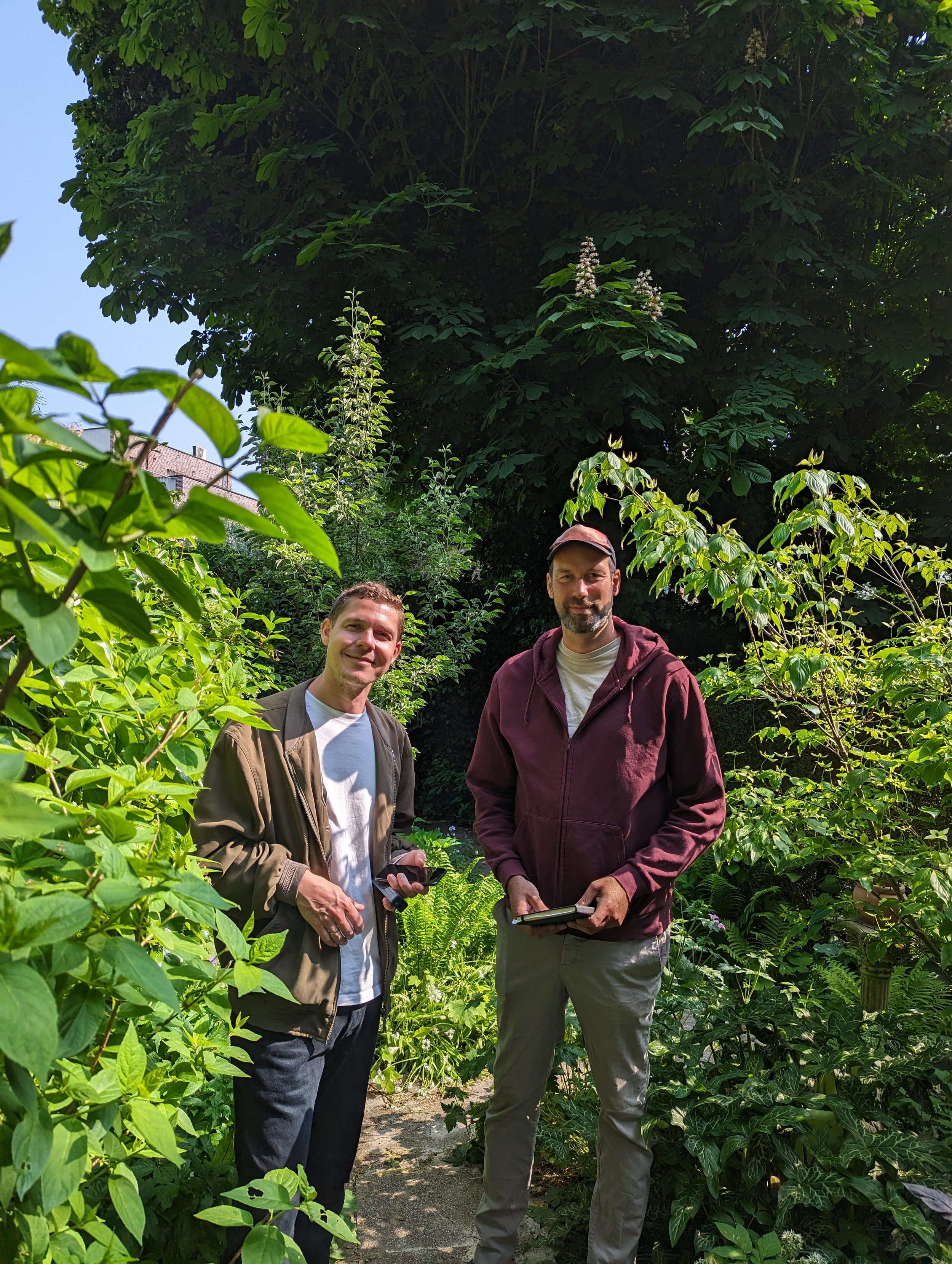The garden begins…
As I write this, it is lightly snowing and hovering just below zero. Last night it got down to -4C°, and tonight it’s forecast to go down to -7 C°.
The pond has frozen and the plants in the garden are dormant and inert, waiting till spring to revive.
But I am getting ahead of myself! I need to introduce you to my garden in Rotterdam, and catch you up on what we’ve been doing so far.
The garden is small by Sydney standards, at 4 x 14 metres, but considered generously proportioned in this densely-populated Dutch city. I think of it as manageable. It is part of a large courtyard surrounded by four rows of terrace houses, the sort of design common in Europe. The houses open directly onto the streets and the gardens, often separated by hedges, are in the rear.
When we moved in last spring, the garden was lush but overgrown, with some plants overwhelming others, and more concrete paving than we wanted. Solid paving is brutal to the biota of the soil beneath, which needs to breathe to thrive.
I approached a local garden design/gardening cooperative, STEK. STEK specialises in natural, environmentally-friendly urban gardens. Lex Kortenoeven and Eric van Ulden came to visit, looked over the garden, and over cups of tea we talked through my vision. It was one of those times when you know you’ve made exactly the right decision. Lex and Eric completely understood what I wanted: biodiversity, colour and life! Over the following months, we worked on a plan.
Lex and Eric came up with a plant list—over thirty native plants specifically chosen for the site and to encourage a diversity of fauna. (While my knowledge of Australian flora isn’t too shabby, here I am an utter neophyte!) We agreed that the garden would be organic, informal, would include a pond, plenty of habitat and food for birds and insects, and nesting boxes for birds and bats. We chose an innovative option for tiling: beautiful hexagonal eco-pavers with holes to allow water to seep through and for growing ground cover plants.
Next time… the landscaping begins and the pond goes in.
Feel free to leave a comment and say hi! Subscribe below if you want to be notified of future posts. And thanks for reading. x
PS: There seem to be some technical issues with “liking” posts and sundry other glitches. I am trying to sort them out!




